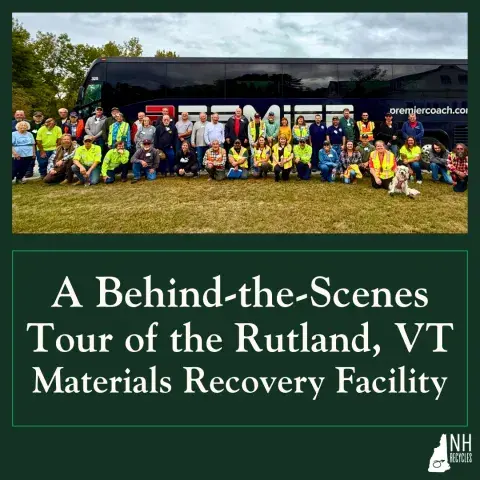
On Wednesday, September 24, NH Recycles brought 50 New Hampshire solid waste and recycling operators on a tour of the Casella-run Materials Recovery Facility (MRF) in Rutland, Vermont. The trip gave participants a rare chance to see what happens to recyclables once they leave their communities and to deepen their understanding of how large-scale recycling operations function.
To ensure accessibility, NH Recycles organized transportation from both southern and northern parts of the state. A large bus departed from the NH Recycles office, while a smaller bus left from The Rocks in Bethlehem so North Country operators could avoid an extra two-hour drive. The two buses met in Lebanon before continuing together to the facility, allowing operators from across New Hampshire to connect.

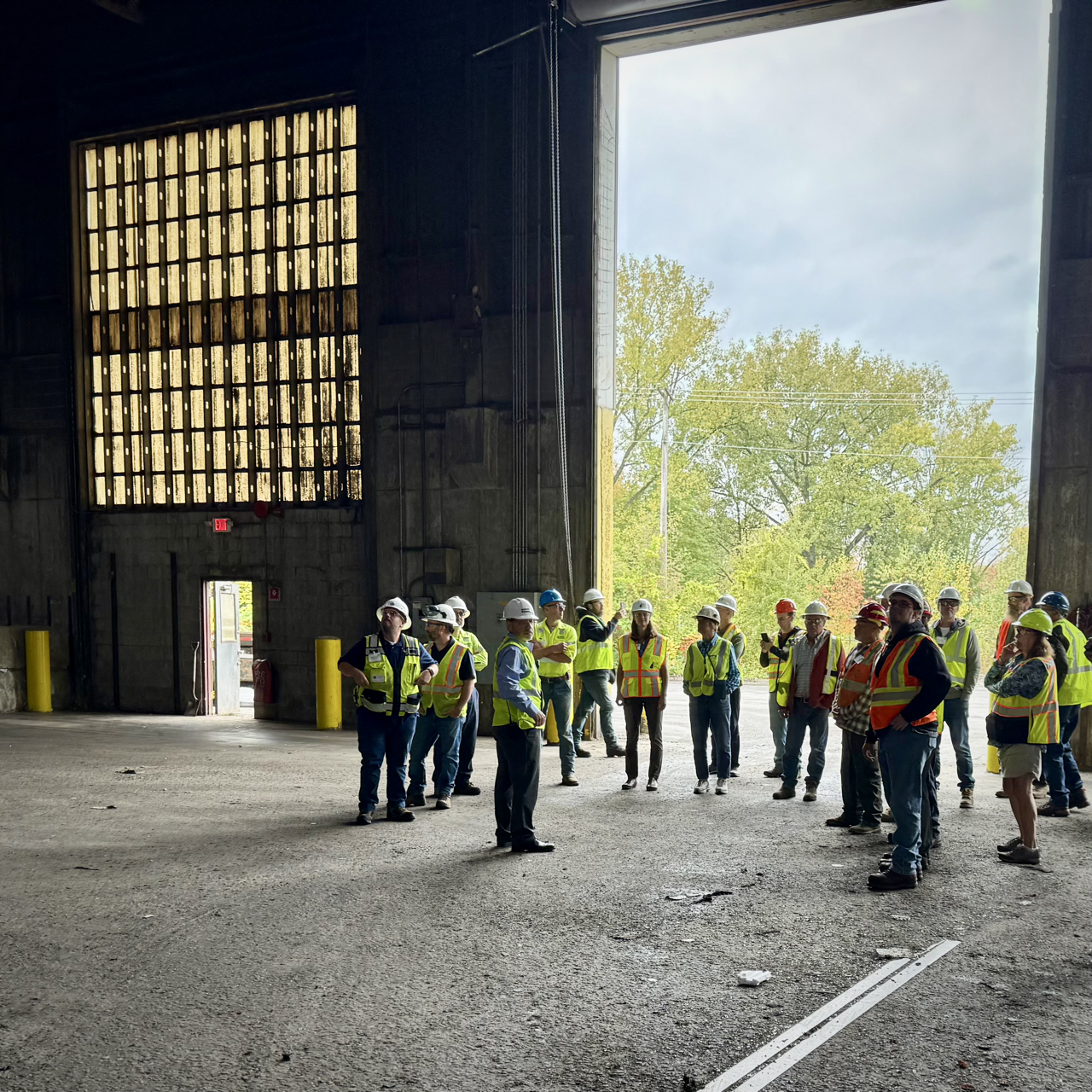
What is MRF?
A Materials Recovery Facility, or MRF, is a recycling plant that uses a mix of technologies—air, magnets, optical sorters, screens, and human labor—to separate materials. Once sorted, recyclables are baled and sold to processing plants that turn them back into raw materials for new products.
The Rutland County Solid Waste District owns the Rutland City MRF, which is leased to Casella Waste Management. The facility processes “Zero Sort” recycling collected from transfer stations, commercial haulers, and large generators. Since tracking began in 2013, the facility has processed more than 260,000 tons of recyclables, currently handling around 265 tons per year from across the region.

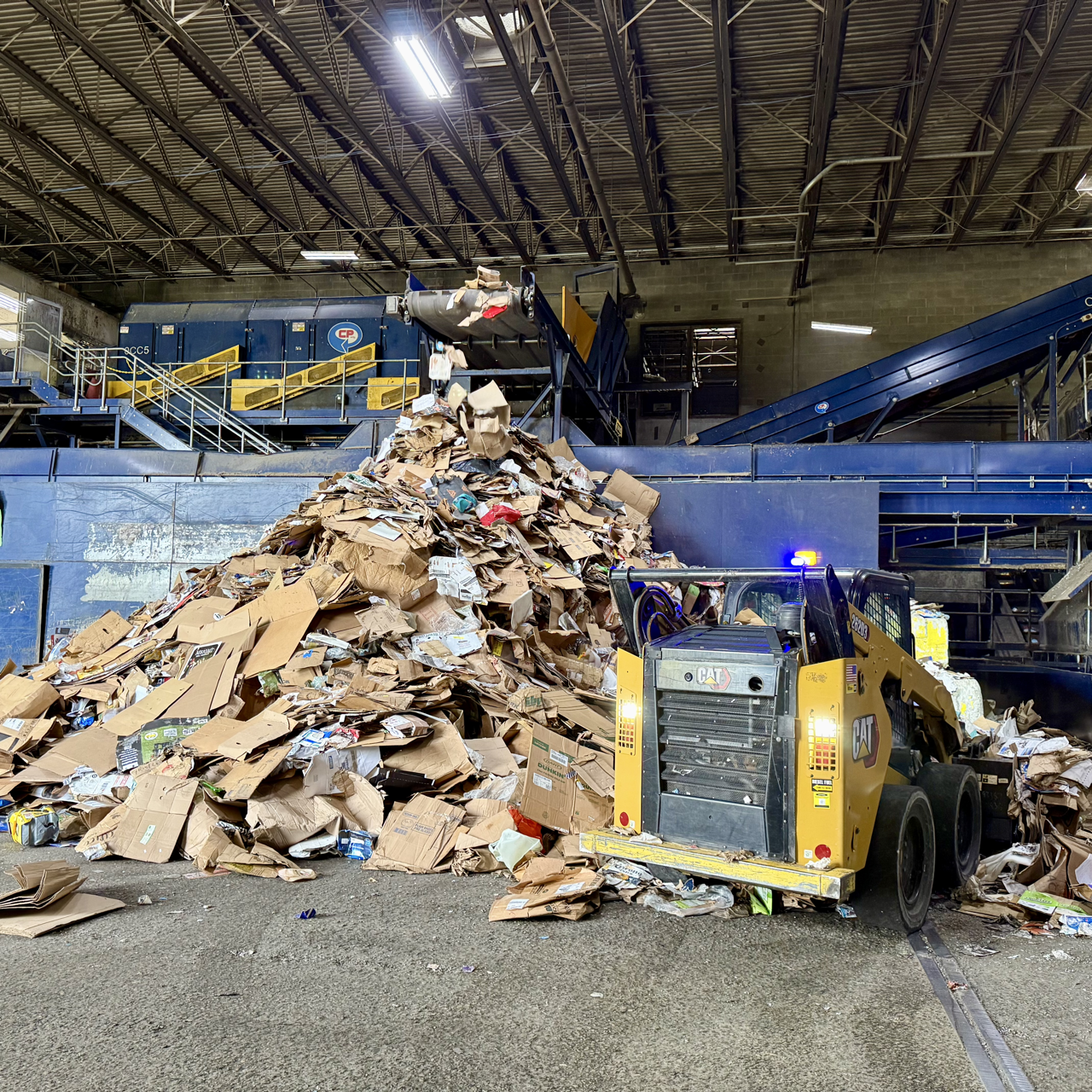

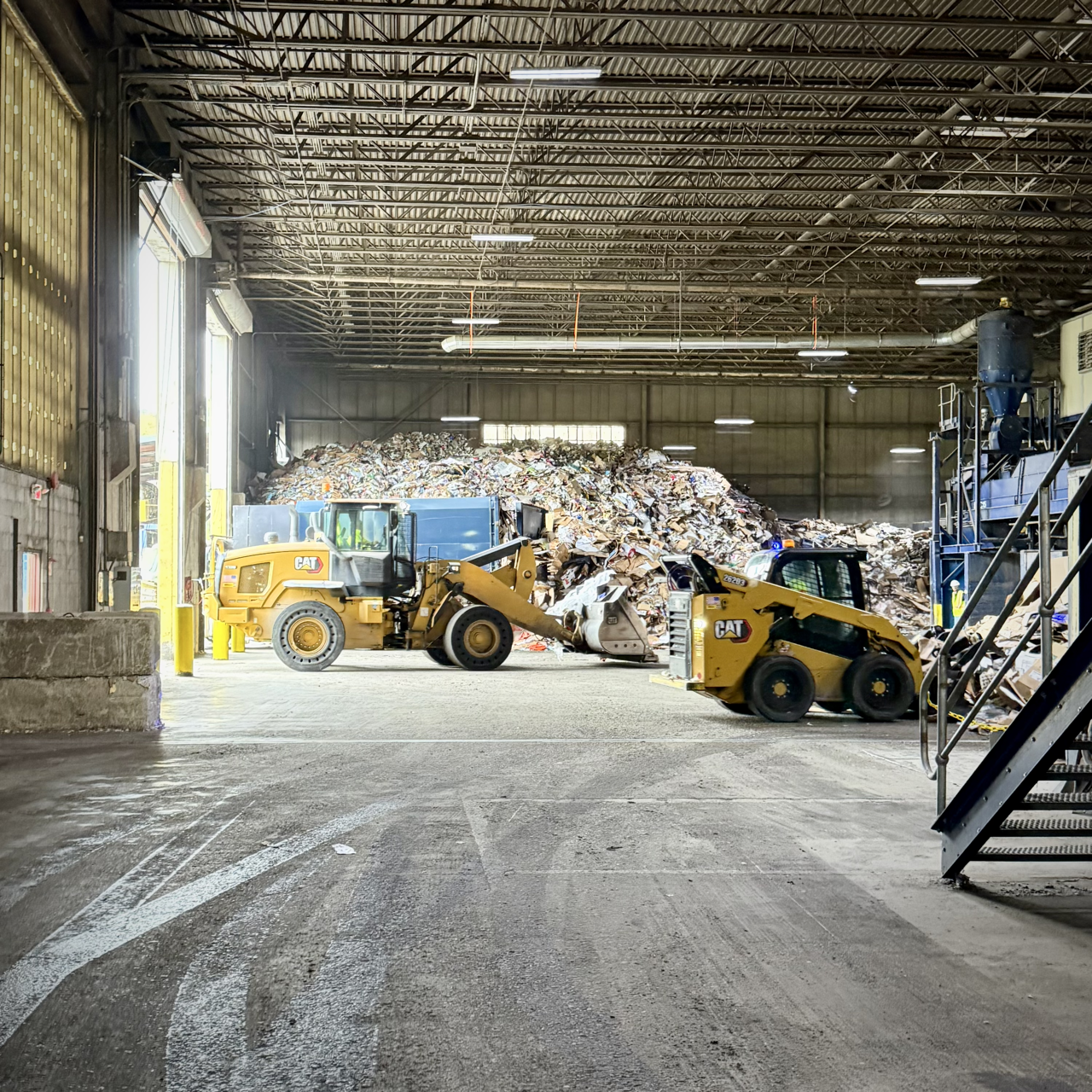
Learning on the Road
On the way to Rutland, operators viewed three short videos created by NH Recycles as part of the Recycle Right North Country campaign. The films followed recyclables from North Country facilities to their end markets, demonstrating that recycling truly does have a life beyond the bin.
Andrea Folsom, NH Recycles’ Education and Grants Manager, also delivered a “Recycling 101” presentation. While typically aimed at residents, the presentation gave operators fresh insights they can share in their own communities. One key discussion centered on plastics, specifically clarifying that the chasing arrows symbol is not a guarantee of recyclability but rather a general indicator - it's a clue, not a directive, of recyclability. Participants also explored why certain plastics, such as clamshell containers, are harder to recycle due to their composition and processing challenges.

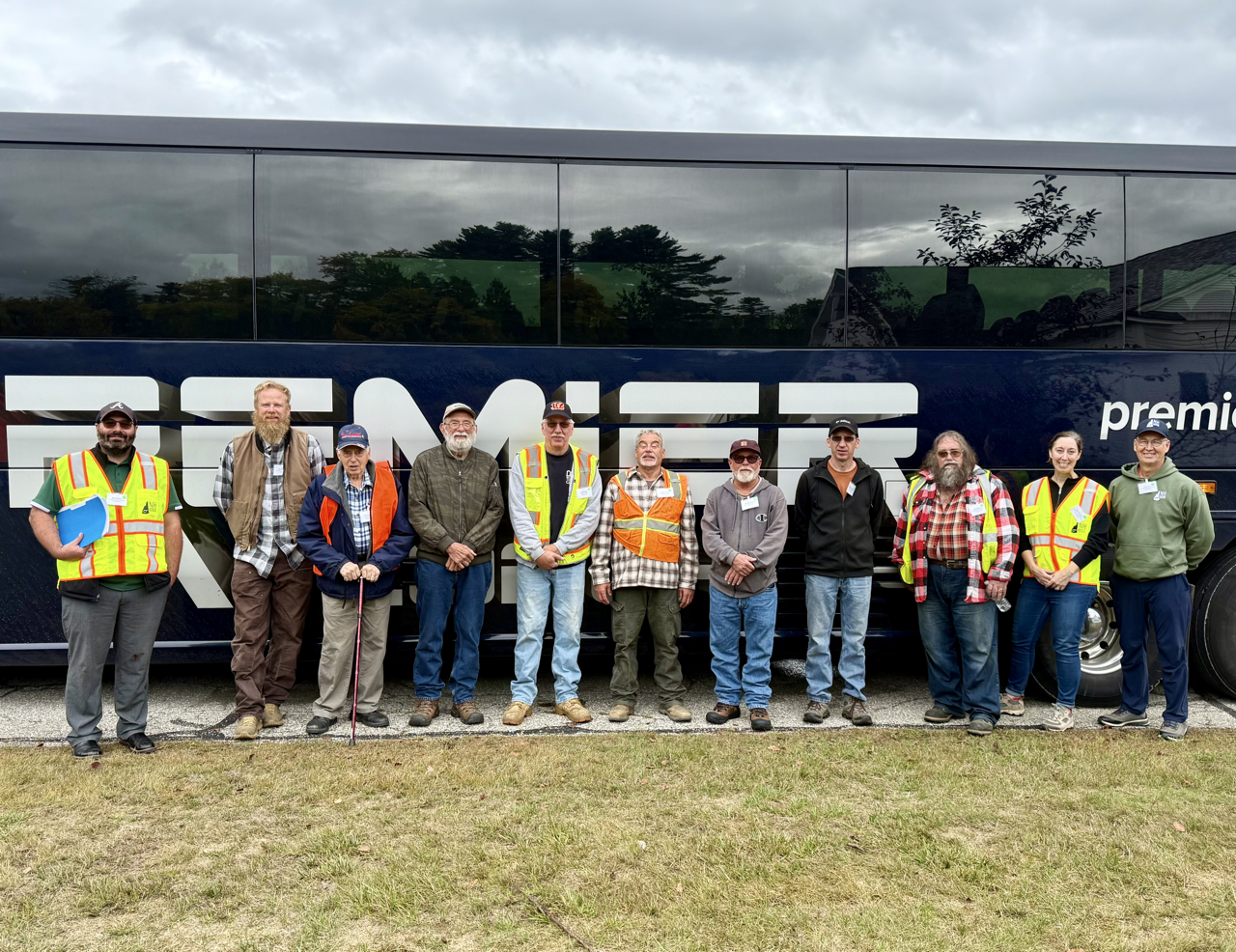
(left)Education & Grants Manager, Andrea Folsom (usually behind the camera) gets in on the picture; (right) the North Country operators who were able to join the bus tour as part of the Recycle Right North Country campaign.
Inside the Facility
Outfitted with safety gear, the group split into two tours of the 58,000-square-foot, multi-story MRF. Operators observed the process from the tipping floor—where trucks unload mixed recyclables—through the complex series of sorting systems. They saw screens that separate items by size, robots that identify plastics, an eddy current that pulls out aluminum, a tumbler for glass, and staff removing contaminants and specific recyclables by hand. They also got a look at massive bales of recyclables awaiting shipment to end markets, weighing anywhere between 1500 - 2000 pounds each.
Operators were able to compare how large-scale operations can access markets that small towns cannot, such as for rigid plastics. They also noted differences in contamination: while single-stream recycling makes participation easier for residents, it often results in higher contamination rates compared to source-separated systems.

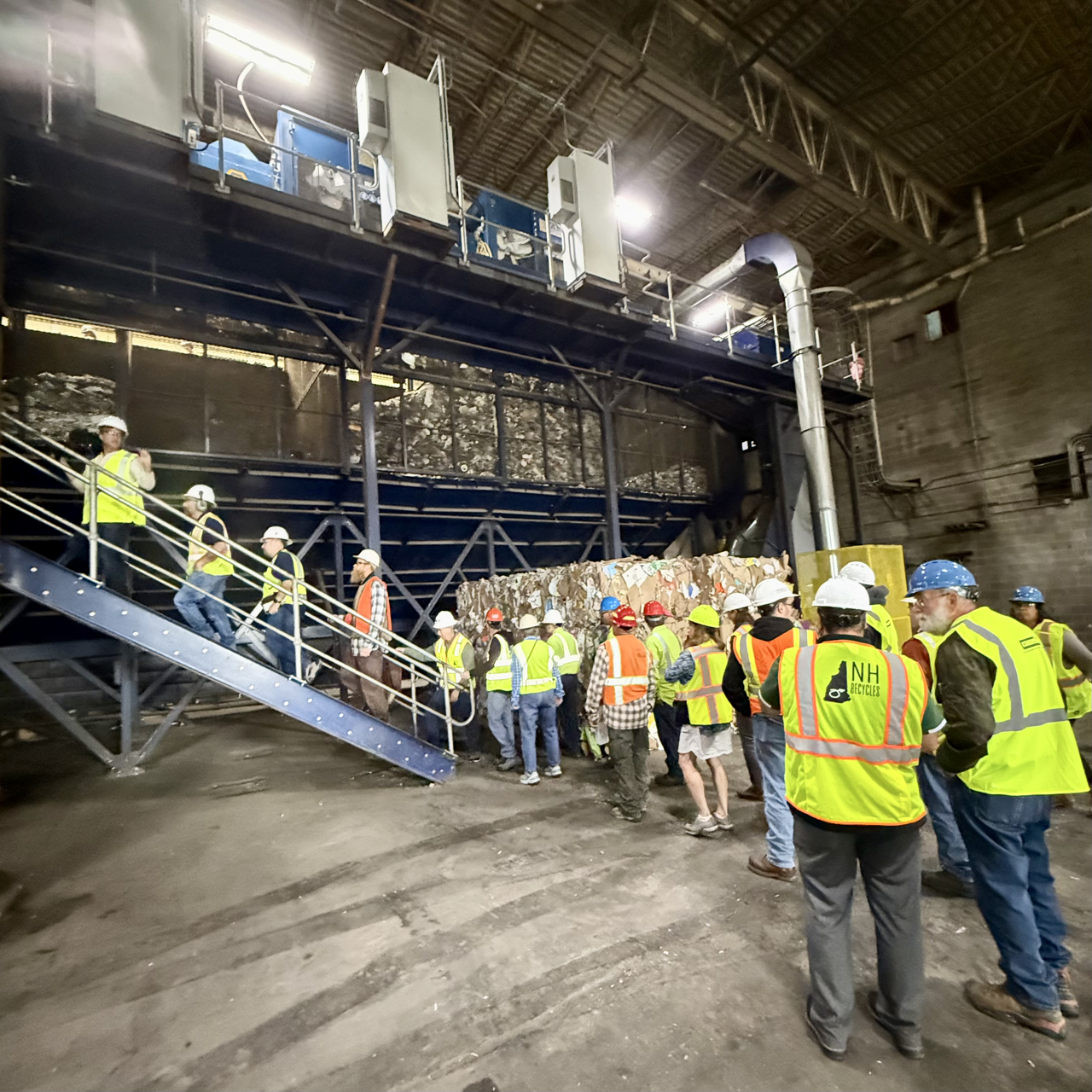
(left) The group looks on as cardboard is separated from the single-stream recycling line; (right) attendees head upstairs to check out robotic plastics diversion

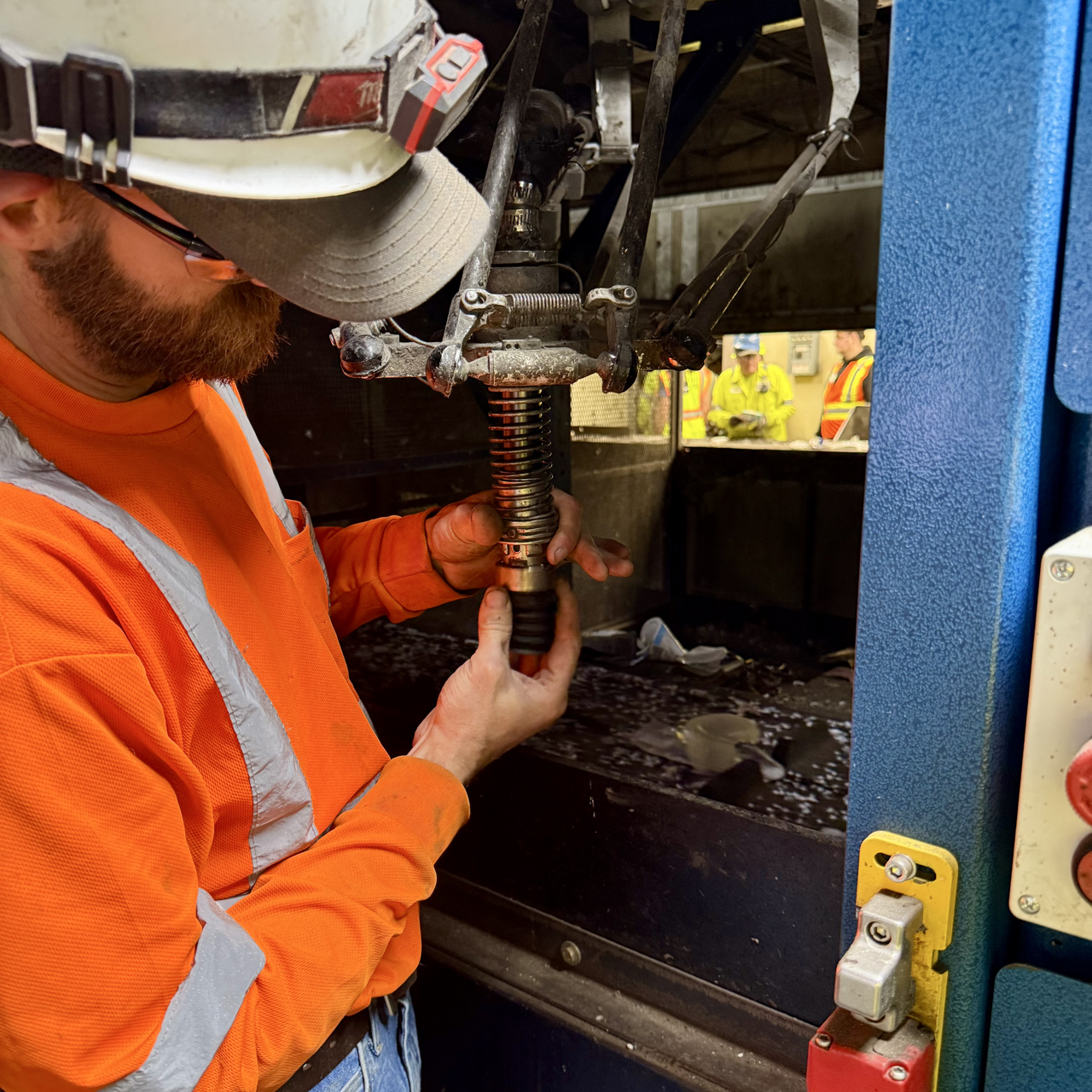
(left) Looking at a robot suction attachment, which is used to pick out specific recyclables (right) robot attachment being replaced after it loses suction over time
Key Takeaways
The visit highlighted trade-offs between recycling models. Operators from single-stream communities like Concord and Moultonborough, NH appreciated the chance to see how their residents’ recyclables are processed, while source-separated operators were struck by the fact that, unlike their systems, the revenue from the sale of recyclables in single-stream communities goes to the facility owner, not the municipality. In contrast, operators from source-separated towns saw firsthand the advantages of economies of scale—where access to larger volumes of recyclables opens doors to more vendors and markets.
The day ended with lunch and a presentation at Casella’s Learning Center, where participants discussed the NH Recycles' State of Recycling report - this month's Member Market Update. On the return trip, operators took advantage of the bus ride to exchange insights, ask follow-up questions, and network with peers from across New Hampshire.
By the end of the day, attendees walked away with a clearer picture of the recycling system, a better understanding of the challenges and opportunities at play, and new tools to educate residents and improve recycling quality in their own communities.

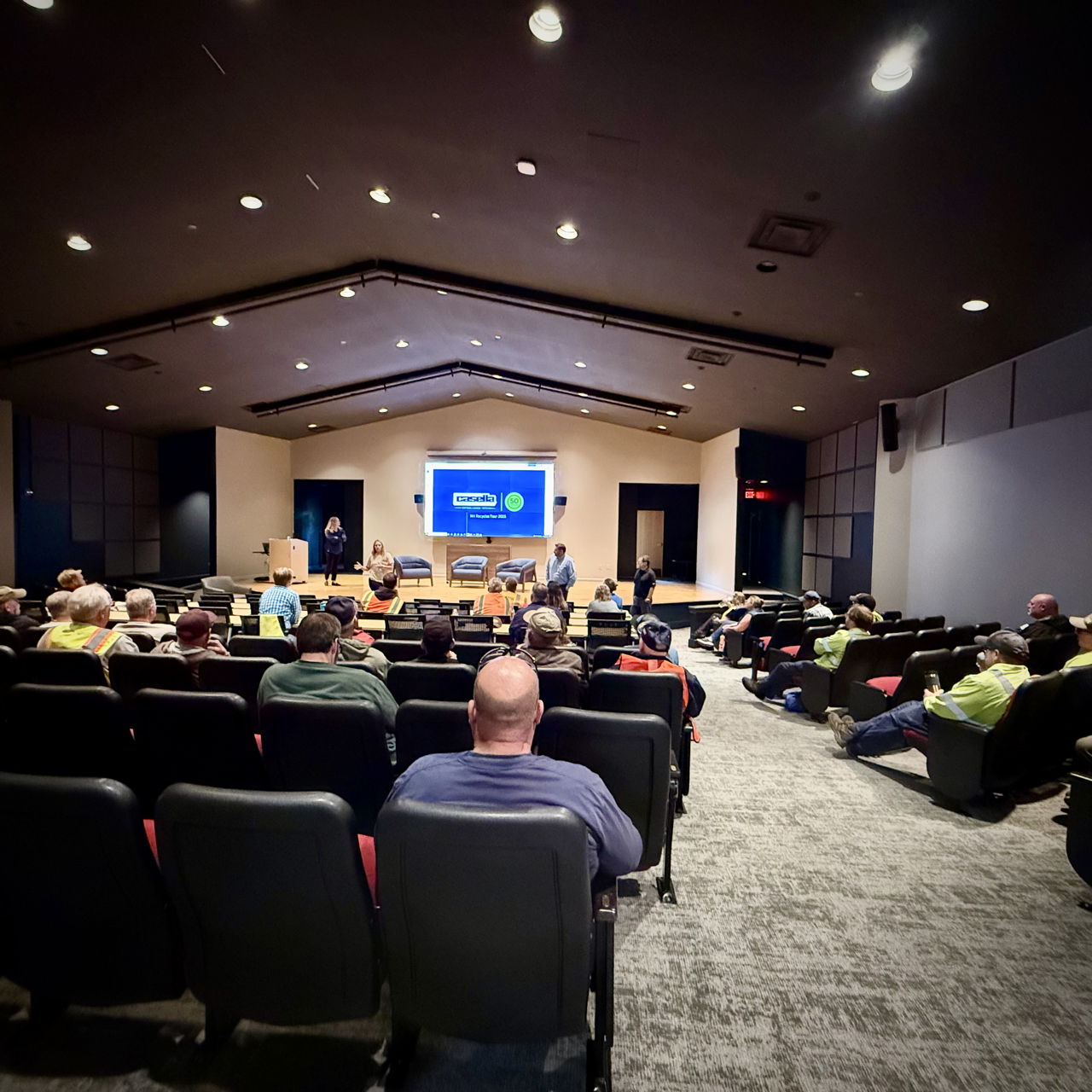
(left) The group asks questions following the MRF tour; (right) presentations at the Learning Center
EPA disclaimer: This project has been funded wholly or in part by the United States Environmental Protection Agency under assistance agreement 4Y-84078701 to NH Recycles. The contents of this project do not necessarily reflect the views and policies of the EPA.
